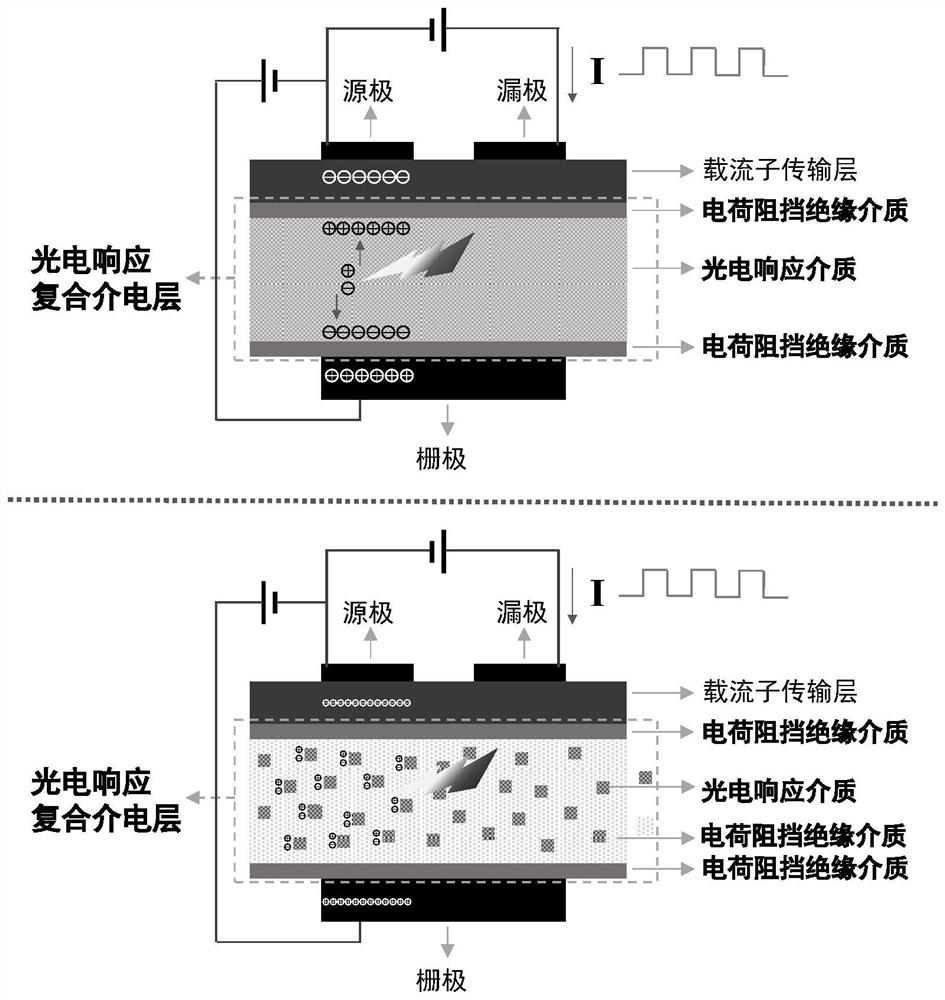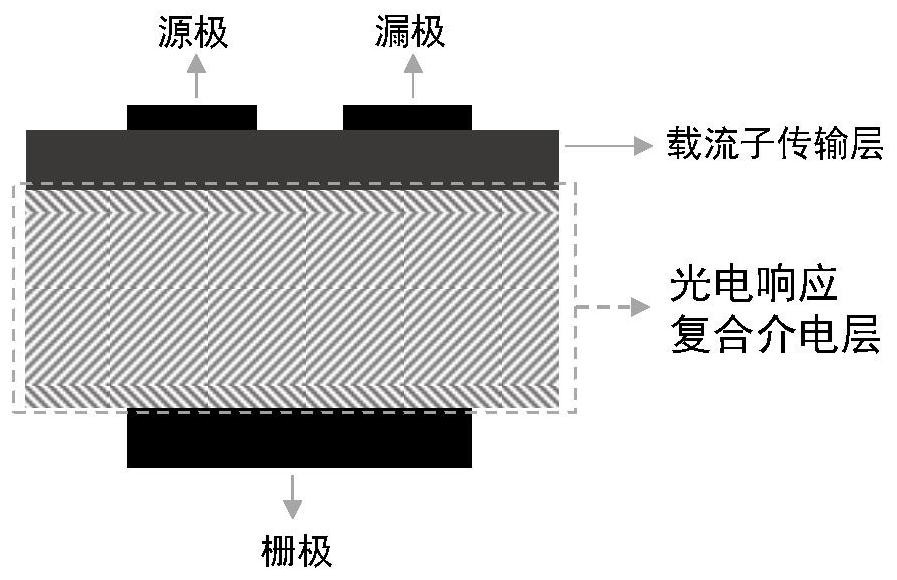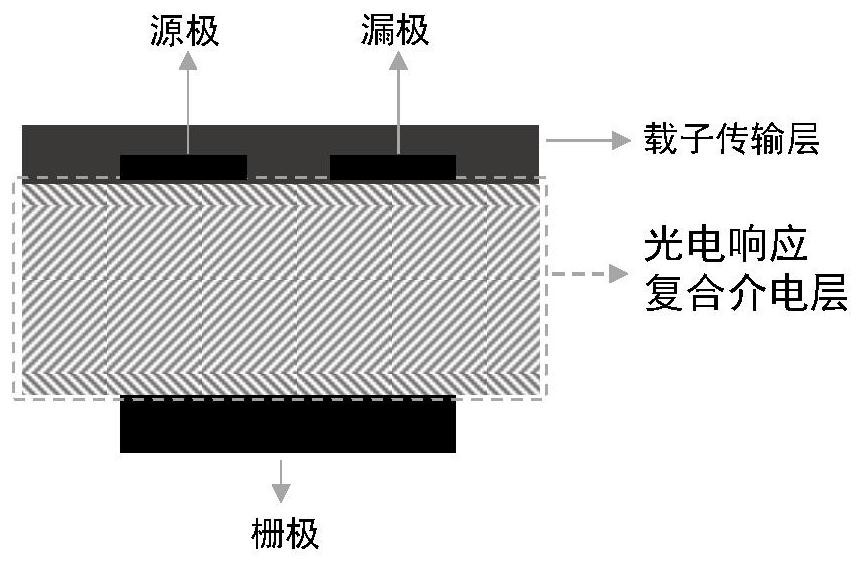Field effect transistor photoelectric detector based on dielectric layer response
A technology of photodetectors and field effect tubes, applied in the field of photodetectors, can solve the problems of increasing the cost of photodetectors, small dark current, limiting device sensitivity, etc.
- Summary
- Abstract
- Description
- Claims
- Application Information
AI Technical Summary
Problems solved by technology
Method used
Image
Examples
Embodiment 1
[0032] A field effect tube photodetector based on the response of a dielectric layer, such as figure 1 As shown, it includes gate, photoelectric response composite dielectric layer, carrier transport layer, source and drain; wherein, the photoelectric response composite dielectric layer is composed of photoelectric response medium and charge blocking insulating medium;
[0033] The carrier transport layer is used to transport electrons or holes, the photoresponsive medium is used to absorb light to generate electrons, holes or excitons under light, and the charge blocking insulating medium is used to confine electrons, holes, excitons, etc. The passage of electrons; the generation of photogenerated electrons, holes or excitons in the photoelectric response composite dielectric layer and their movement confined in the photoelectric response medium lead to the change of the equivalent dielectric constant of the photoelectric response composite dielectric layer, and then The chan...
example 1
[0049] Tin-doped indium oxide transparent conductive glass is used as the gate; a 20nm polymethyl methacrylate film is prepared by spin coating on it, which is used as a charge blocking insulating medium; 100nm FASnI is deposited on the polymethyl methacrylate film 3 halide perovskite layer, used as a photoelectrically responsive medium; in FASnI 3 A 10nm aluminum oxide film is deposited on the film by atomic deposition technology as a charge blocking insulating medium; a Spiro-OMeTAD film is prepared by spin coating on it as a carrier transport layer; metal source and drain are evaporated on the Spiro-OMeTAD film Pole; apply bias voltage between source, gate and drain respectively, apply 800nm light to the device, test the change of current between source and drain before and after adding light, such as Figure 8 As shown, the current between the source and drain in the device changes significantly before and after the application and removal of light, and the device exhibi...
example 2
[0051] Take the aluminum oxide substrate deposited with gallium nitride, use gallium nitride as the carrier transport layer; evaporate aluminum electrodes on it as source and drain; deposit 10nm aluminum oxide on the carrier transport layer used as a charge-blocking insulating medium; then sequentially deposited 40nm of selenium as a photoresponsive medium and 10nm of aluminum oxide as a charge-blocking insulating medium, and repeated three times; subsequently, deposited an aluminum electrode as a gate; between the source and gate and the bias voltage is applied between the drains, and 500nm light is applied to the device, and the change of the current between the source and the drain before and after the light is tested, such as Figure 9 As shown, the current between the source and drain in the device changes significantly before and after the application and removal of light, and the device exhibits photoelectric response characteristics.
PUM
 Login to View More
Login to View More Abstract
Description
Claims
Application Information
 Login to View More
Login to View More - R&D
- Intellectual Property
- Life Sciences
- Materials
- Tech Scout
- Unparalleled Data Quality
- Higher Quality Content
- 60% Fewer Hallucinations
Browse by: Latest US Patents, China's latest patents, Technical Efficacy Thesaurus, Application Domain, Technology Topic, Popular Technical Reports.
© 2025 PatSnap. All rights reserved.Legal|Privacy policy|Modern Slavery Act Transparency Statement|Sitemap|About US| Contact US: help@patsnap.com



